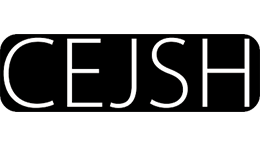Guidelines for Authors
Before submitting your proposed work, please read the sections About the journal, Rules for qualifying and reviewing texts, and Ethics, procedures and privacy policy.
Please ensure that your submitted work complies with the standards outlined below and that you agree with the policies of our journal.
To promote transparent and accurate reporting of scientific research in the field of health sciences, the journal's editorial team recommends that authors follow established reporting standards applicable to different types of studies and medical/health science disciplines. These standards are available through the EQUATOR Network and include:
Randomized Controlled Trials:
CONSORT (Consolidated Standards of Reporting Trials) – Guidelines aimed at improving the quality of reporting for randomized controlled trials.
Observational Studies:
STROBE (Strengthening the Reporting of Observational Studies in Epidemiology) – Guidelines for reporting observational studies, including cohort, case-control, and cross-sectional studies.
Systematic Reviews and Meta-Analyses:
PRISMA (Preferred Reporting Items for Systematic Reviews and Meta-Analyses) – Standards for transparent reporting of systematic reviews and meta-analyses.
Study Protocols:
SPIRIT (Standard Protocol Items: Recommendations for Interventional Trials) – Guidelines for key elements in protocols of interventional studies.
Diagnostic Studies:
STARD (Standards for Reporting Diagnostic Accuracy Studies) – Guidelines for reporting studies assessing diagnostic accuracy.
Prognostic and Predictive Models:
TRIPOD (Transparent Reporting of a Multivariable Prediction Model for Individual Prognosis or Diagnosis) – Guidelines for reporting prognostic and diagnostic models.
Qualitative Research:
COREQ (Consolidated Criteria for Reporting Qualitative Research) – Guidelines for reporting interviews and focus groups in qualitative research.
Animal Research:
ARRIVE (Animal Research: Reporting of In Vivo Experiments) – Guidelines for reporting studies conducted on animals.
Economic Evaluations:
CHEERS (Consolidated Health Economic Evaluation Reporting Standards) – Standards for reporting economic analyses in healthcare.
A full list of recommendations and standards is available at: https://www.equator-network.org/reporting-guidelines/
The authors of works accepted for publication are obliged to complete and send a signed declaration on the transfer of copyrights to the journal publisher.
- Texts should be submitted via the report article tab (side menu). You must register on the website and follow the guidelines when submitting an article to the system
- Texts can be written in Polish, congress languages or Slavic languages.
- Files should be saved in doc or docx, and one copy in pdf format should be attached
- All illustrative materials such as photographs, maps, charts, etc. should be provided in separate files in PNG, JPG, TIFF, PCX, BMP or EPS, CDR, XLS formats. Illustrations provided in PDF format or copied into the article in Word will not be published.
- Typeface: Times New Roman, 12-point font, 1.5 line spacing. The text should be justified and the pages numbered (numbering at the bottom of the page)
- Please send the text in full and in an anonymized version. Any information that may reveal the author of the reviewed work should be removed from the anonymized version. If you cite your own works, please replace the name of the author of the submitted work with the phrase Nomen Auctoris. In the bibliography, replace the remaining data with the phrase Opus.
- Please attach a title page, which should include a full list of authors with affiliations and e-mail addresses, the title of the proposed work and statements of any potential conflicts of interest.
- Articles and dissertations must be accompanied by an abstract in the language of the article and in English, containing 200-250 words, as well as thematic words in the original language and English (maximum five). The summary should be concise, complete and autonomous (as it will be placed in various databases). It should contain the main theses of the article, present the purpose, problem, research methods, research results, and conclusions.
- At the end of the article, a bibliography should be included containing all items cited in the main text and in the footnotes, as well as a list of sources and linguistic abbreviations used by the Author.
- Please mark quotations and bibliographic references in the text according to APA standards (for details, see: https://apastyle.apa.org/).
EXAMPLES
Reference in the main text – (Milewski, 2022, p. 49)
In the bibliography, we use the following entries:
- journal paper:
Casasanto, D., Fotakopoulou, O., Boroditsky, L. (2010). Space and Time in the Child's Mind: Evidence for a Cross-Dimensional Asymmetry. Cognitive Science, 34, 387-405.
- paper in a collective work:
Milewski, S. (2022). Phonotactics and phonostatics in speech therapy theory and practice. In: A. Domagała, U. Mirecka (eds.), Preschool and early school speech therapy (pp. 48-87). Gdańsk: Harmonia Universalis.
- monograph:
Kandel, E.R. (2021). Disturbed mind. What unusual brains say about us. Kraków: Copernicus Center Press.
- collective work:
Domagała, A., Mirecka, U. (ed.). (2022). Preschool and early school speech therapy. Gdańsk: Harmonia Universalis.






